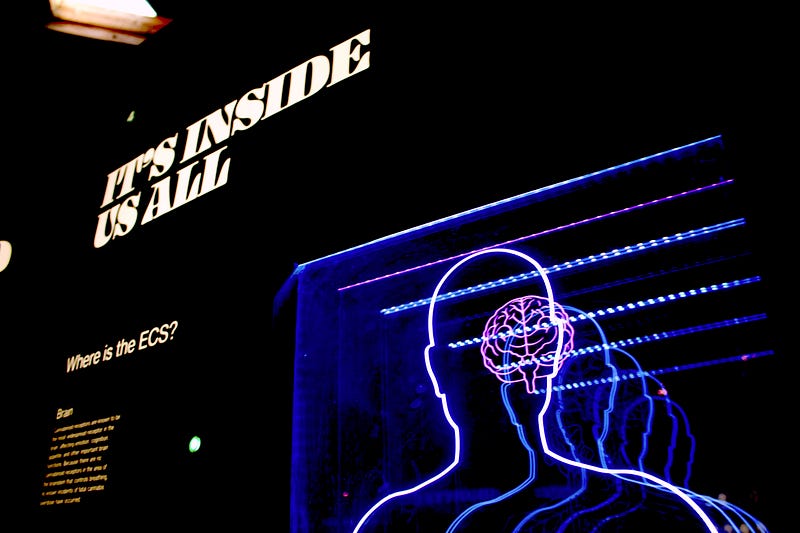
are We Going to Control Systems with Our Minds?
Strap in and prepare to have your perception of what’s possible with technology utterly reshaped, folks. Because a team of brilliant minds from the hallowed halls of Stanford University just kicked open the doors to a whole new frontier of human-computer interaction — and it’s going to rock this world to its core.
I’m talking, of course, about their brain-computer interface (BCI) breakthrough — a system that allows users to type out text with nothing more than the firing of neurons between those fleshy folds of gray matter we call the brain. That’s right, just by harnessing the electrical signals that course through your cranium as you think, this BCI tech can transcribe those literal thoughts onto a digital screen.
Cue explosions, fireworks, the whole shebang — because we’ve officially entered an era of computer interaction constrained only by the limits of the human mind itself. This isn’t just revolutionary; it’s stratospherically mind-bending in its implications for everything from accessibility to augmented reality to even that elusive digital utopia dubbed “the Metaverse.”
So let’s dive deep into the specifics of this stuttering, game-changing innovation — how it actually works from a technical perspective, the brilliant pioneers who manifested it into reality, and why the ripple effects could reshape our relationship with computers forevermore.
Decoding the Neural Code: How BCI Translates Brain Signals to Keystrokes
Okay, I know what you’re thinking: “This all sounds fanciful, but how the heck does a tangle of wires and circuit boards actually decode the messy riot of neural activity to piece together coherent commands?” Well, allow me to blow your mind further.
The crux of Stanford’s breakthrough lies in their mastery of an imaging technique known as high-density electrocorticography (ECoG). This non-invasive brain scanning system uses a dense grid of electrodes placed directly on the surface of the brain to capture an unprecedented level of detail in the neural signals firing across those furrowed folds of gray matter.
It’s like placing a thousand tiny microphones throughout a symphony hall to capture the interplay of each individual instrument section. Except in this case, the symphony is the intricate dance of electrical impulses triggered by your thoughts — whether conscious or subconscious.
With such a richly detailed recording of the brain’s neural chatter, the research team could then feed those analog signals into the potent predictive models of machine learning (ML) and deep learning algorithms. These artificial intelligences act as a sort of real-time translator, analyzing the complex patterns to decode the user’s intended keystrokes.
And we’re not talking about simple, sluggish interpretation either. Thanks to cutting-edge processing techniques that compute these predictions at blistering speeds with minimal latency, Stanford’s BCI allowed test subjects to blaze through text at up to 90 words per minute — an impressive rate for even the nimblest thumbs on a smartphone keyboard.
Just let that accomplishment resonate for a moment. In an era of constant digital distractions, of being chained to our screens and devices, we may soon have the power to transcribe our innermost thoughts directly from the source with zero physical exertion. It’s the stuff of science fiction made startlingly real.
Revolutionizing Accessibility, From Tech to Thought

While the pure “whoa, awesome” factor of this technology is enough to spark intrigue across enthusiast circles, Stanford’s BCI breakthrough holds truly profound implications for a marginalized community — people living with disabilities or limited mobility.
For those afflicted by conditions like paralysis, ALS, or neurodegenerative diseases, modern computing and communication can be an immense physical and psychological barrier. Typing out even simple messages requires heroic feats of persistence using mouth sticks, head-tracking devices, or cumbersome eye-tracking software. Mental and emotional fatigue is an ever-present burden.
But envision a world where those constraints are obliterated — where the very spark of human cognition can be the catalyst to share ideas, emotions, dreams. No longer captive in a prison of atrophied flesh, but free to let one’s psyche roam across the digital cosmos.
With Stanford’s thought-to-text breakthrough, that empowering future is no longer a mere fantasy. Those grappling with extreme physical disabilities could soon regain the power of expression, of connection, simply by thinking their messages into being.
On a societal level, it has the potential to tear down long-standing communication barriers while opening new professional opportunities in fields that may have been off-limits before. Where disabilities once severed ties between individuals and the world around them, this BCI could represent an equalizing force — a digital bridge to forge long-overdue inclusion.
But far beyond just pragmatic accessibility, there are tantalizing glimpses of how this mind-to-machine symbiosis could enrich the human experience in wildly unexpected ways.
Immersive Worlds Shaped by Thought

As transformative as BCIs could prove for those with disabilities, the bleeding edge of immersive technologies like augmented reality (AR), virtual reality (VR), and that ever-elusive “Metaverse” could birth applications that reshape human-computer interaction from the ground up.
Imagine pulling on a headset to enter a photorealistic virtual realm — a digital world with depth, dimension, and sensory richness mirroring physical reality itself. You look around in awe, drinking in the sumptuous scenery as it morphs and evolves fluidly in sync with your gaze.
Then, with but a single conscious intention, your dextrous avatar strides forward in perfect synchronicity with the mere thought of “walk.” The motion feels utterly natural, as if you’ve manifested virtual form through sheer psychokinesis.
Perhaps you’ll browse an e-commerce gallery populated with photorealistic clothing, where a conscious blink allows you to summon, inspect, and try-on garments with no clumsy controller or physical input needed. Just think a mental command, and the digital fabric flows over your avatar’s body in fluid animation.
This level of unconscious control and agency, enabled by a direct neural pipeline to the Metaverse’s digital environment, could birth whole new genres of immersive media and entertainment. Gaming assumes a transcendent new dimension where the boundaries between physical and virtual erode away, leaving only pure, uncompromised experience resonating between biological impulses and digital verisimilitude.
Of course, such prospects represent the lofty aspirations of technologists looking to push the very limits of what’s possible in fusing biology and computation. There are plenty of engineering hurdles and ethical ramifications yet to be grappled with.
Overcoming the Obstacles: Challenges on the Horizon
While the initial proof-of-concept from Stanford is nothing short of dazzling, taking this BCI system from laboratory demo to mainstream reality is an undertaking rife with challenges spanning disciplines.
On the hardware front, mastering a non-invasive ECoG system that can achieve those high-fidelity neural readings consistently and affordably is its own scientific gauntlet. Solutions like flexible electrode grids, rapid neural calibration systems, and long-term biocompatibility all demand concerted innovation.
Then there’s the onerous task of refining the machine learning architectures to decode these brain patterns with even greater speed and accuracy — a gargantuan computational challenge we’ll rely on raw processing power and genius model engineering to take on. And that’s not even factoring in the complexities of scaling such a system to interface with different hardware platforms and operating systems with minimal latency.
Usability remains another towering obstacle. For all its superhuman potential, BCI needs to find intuitive means for users to learn, develop, and customize the neural patterns that efficiently control the tech. We’re talking advanced cognitive training routines akin to learning a new language at first. Without elegant, user-centric implementation, even the most paradigm-shifting innovation is doomed to niche obscurity.
And hovering like a spectre above all development is the inescapable matter of ethics — especially concerning data privacy and the security implications of technologies that peer unflinchingly into the human mind’s electrical impulses. Urgent dialogue on governing policies, access restrictions, and consent parameters remains a necessity before society ever embraces BCI on a global scale.
Admittedly, the roadmap from Stanford’s breakthrough to ubiquity is littered with daunting speed bumps across the entire value chain. But in the world of transformative innovation, tectonic shifts are always preceded by herculean growing pains. It’s the burden carried by those bold enough to push boundaries.
An Exhilarating New Era of Thought-Powered Potential
For all the hurdles ahead though, there’s no denying the sheer exhilaration of the frontier Stanford has staked out with their brain-computer interface breakthrough. Much like the dawn of the personal computer or the birth of the Internet before it.
